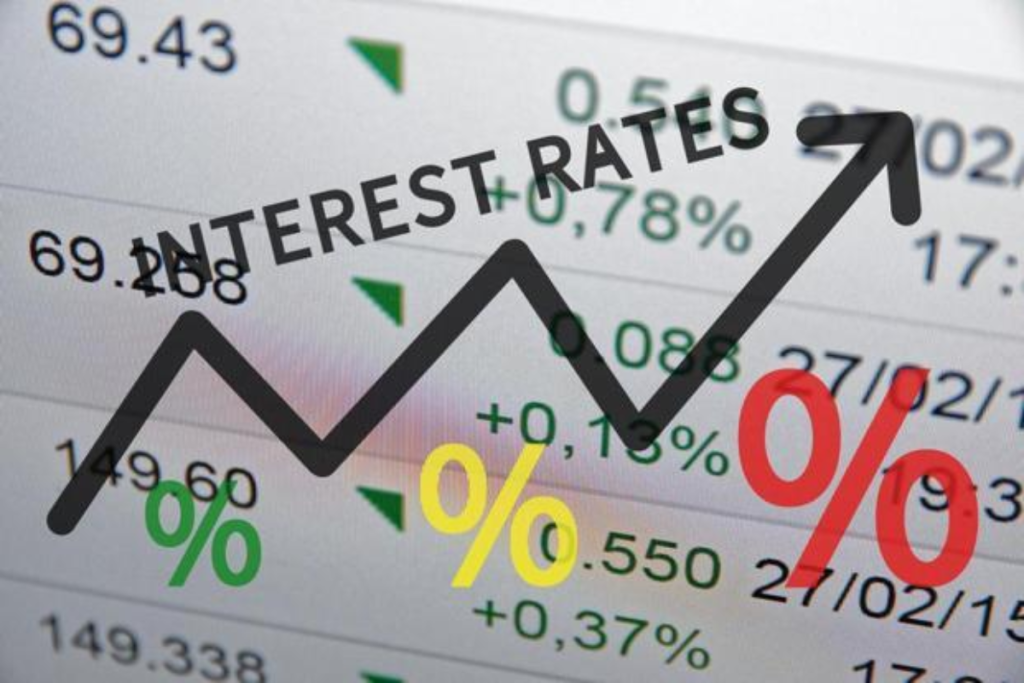
As of September 2024, interest rates are a significant focus in the global financial landscape. The Federal Reserve recently made a pivotal decision, cutting its benchmark interest rate by 50 basis points for the first time since 2020. This shift marks a turning point after two years of aggressive rate hikes aimed at curbing inflation. Now, with inflation nearing the Fed’s 2% target, the focus has shifted to sustaining economic growth and protecting the labor market (KNAU) (Investopedia).
Why the Rate Cuts Matter
For the past two years, the Federal Reserve has steadily raised interest rates, reaching a 23-year high. The primary goal was to combat inflation by reducing consumer demand. Higher interest rates made borrowing more expensive, which slowed down spending in sectors like housing and business investment. However, inflation has shown signs of easing, and with the job market’s resilience at stake, the Fed’s recent decision to cut rates signals a new approach.
The rate cut, reducing the federal funds rate to a range of 4.75% to 5%, is designed to stimulate the economy by making borrowing cheaper. This move has already had an immediate effect on the stock market, with indices like the S&P 500 and Nasdaq seeing significant gains (Investopedia). Treasury yields, particularly on the 2-year note, also reacted to the announcement, showing fluctuations in the hours following the Fed’s decision.
Economic Ramifications of Lower Rates
Lower interest rates can have a broad range of effects on the economy. For consumers, it means more favorable conditions for loans, such as mortgages, car loans, and credit cards. For businesses, borrowing becomes less expensive, which can encourage investment and expansion. This is especially critical as many sectors still face post-pandemic challenges.
Also Read: 4-30-10 Method: Revolutionizing Modern Productivity and Wellness
The recent rate cut also points to further reductions in the coming months. Policymakers within the Federal Open Market Committee (FOMC) have projected another 50 basis point cut by the end of 2024, with more adjustments expected in 2025 (KNAU). The aim is to balance price stability while maintaining a healthy job market.
Global Implications
The U.S. isn’t the only economy affected by changes in interest rates. Globally, central banks often follow the Fed’s lead, especially in developed economies. Lower interest rates in the U.S. can influence decisions in Europe and Asia, where central banks may consider similar strategies to boost growth.
Moreover, countries reliant on foreign investment or with currencies pegged to the U.S. dollar are particularly vulnerable to shifts in Fed policy. Lower U.S. interest rates could lead to capital inflows into emerging markets as investors search for higher returns abroad. This influx can stimulate economic activity in those regions but may also cause currency fluctuations.
Investor and Market Reactions
The response from financial markets has been overwhelmingly positive, though not without caution. The stock market surged following the Fed’s announcement, with key indices like the Dow Jones and Nasdaq seeing significant jumps. Investors seem to welcome the decision, which is expected to lower borrowing costs and fuel corporate growth (Investopedia).
Also Read: Look at Today’s 15-Year Mortgage Rates – How to Secure the Best Deal
However, there is some concern about the long-term implications of the rate cuts. Critics argue that while lower interest rates can provide short-term economic relief, they might also fuel asset bubbles or excessive risk-taking, especially in sectors like technology and real estate. Furthermore, some economists worry that reducing rates too quickly could reignite inflation if demand grows faster than supply.
Dissenting Opinions
Not all members of the FOMC were in agreement over the extent of the rate cut. Governor Michelle Bowman, for instance, advocated for a smaller reduction of 25 basis points, highlighting concerns about moving too aggressively (Investopedia). This marks the first significant dissent within the FOMC since 2022, reflecting the uncertainty about the best path forward for monetary policy.
Despite the disagreements, Fed Chair Jerome Powell emphasized that the committee remains committed to adjusting interest rates as needed, based on economic conditions. Powell reiterated the importance of flexibility in monetary policy, especially as the global economy faces new challenges, such as geopolitical tensions and the ongoing recovery from the COVID-19 pandemic.
The Future Outlook
Looking ahead, the key question is whether the rate cuts will be enough to sustain economic growth without reigniting inflation. The Fed’s projections suggest a gradual reduction in borrowing costs over the next year, but this strategy will depend heavily on inflation trends, employment data, and broader economic indicators.
If inflation continues to decline and the job market remains stable, we can expect the Fed to continue its easing cycle. However, if inflation picks up again or global economic conditions worsen, the central bank may be forced to reverse course and raise rates once more.
Final Verdict – A Balancing Act
The current interest rate environment reflects a delicate balancing act between controlling inflation and fostering economic growth. The Federal Reserve’s recent decision to cut rates represents a significant shift in strategy, one that could have lasting impacts on both the U.S. and global economies. As market reactions unfold and future rate cuts are debated, the world will be watching closely to see how central banks navigate this complex economic landscape.
For now, businesses and consumers alike can benefit from lower borrowing costs, but the road ahead remains uncertain. As the Fed continues to adjust its policy, economic stability and growth will remain at the forefront of its mission.
